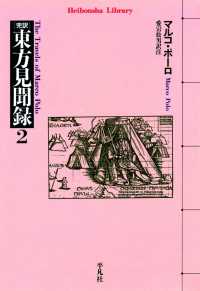- ホーム
- > 洋書
- > ドイツ書
- > Mathematics, Sciences & Technology
- > Technology
- > mechanical engineering & production engineering
Full Description
This book provides a clear and lucid introduction to the field of non-reciprocal supercurrent transport in Josephson junctions, particularly the Josephson diode effect in junctions fabricated from mechanically exfoliated transition metal dichalcogenides and its microscopic mechanism. Superconducting materials that display a non-reciprocity in their critical current, namely a supercurrent diode effect (SDE), and Josephson junctions (JJs) that display a Josephson diode effect (JDE) have recently been discovered just a few years ago. These phenomena have attracted much attention for their potential in creating energy-efficient superconducting electronics. The SDE was discovered for the first time only in 2020 and the JDE shortly afterwards. JJs are a critical element of many superconducting devices and, in particular, superconducting qubits that are under intense study for the development of quantum computers. In order to make use of devices that display a JDE, a detailed and comprehensive understanding of the physical origin or origins of this effect is essential, which is the main topic of this dissertation. In addition to the published results, the dissertation contains detailed information on the basic theoretical aspects of superconductivity, Josephson junctions, and the experimental methods that are necessary to achieve these results, which is suitable for undergraduate and graduate students or any reader with knowledge on basic condensed matter physics.
Contents
Chapter 1.Introduction and scope of the thesis.- Chapter 2.Theoretical Foundations.- Chapter 3.Experimental methods.- Chapter 4.Josephson diode effect induced by finite momentum Cooper pairing in a topological Rashba system 1T-NiTe2.- Chapter 5.Helical spin-momentum locking and tunable second-order junctions in the Dirac semimetal 1T-PtTe2 probed by the Josephson diode effect.- Chapter 6.Conclusions and outlook.








